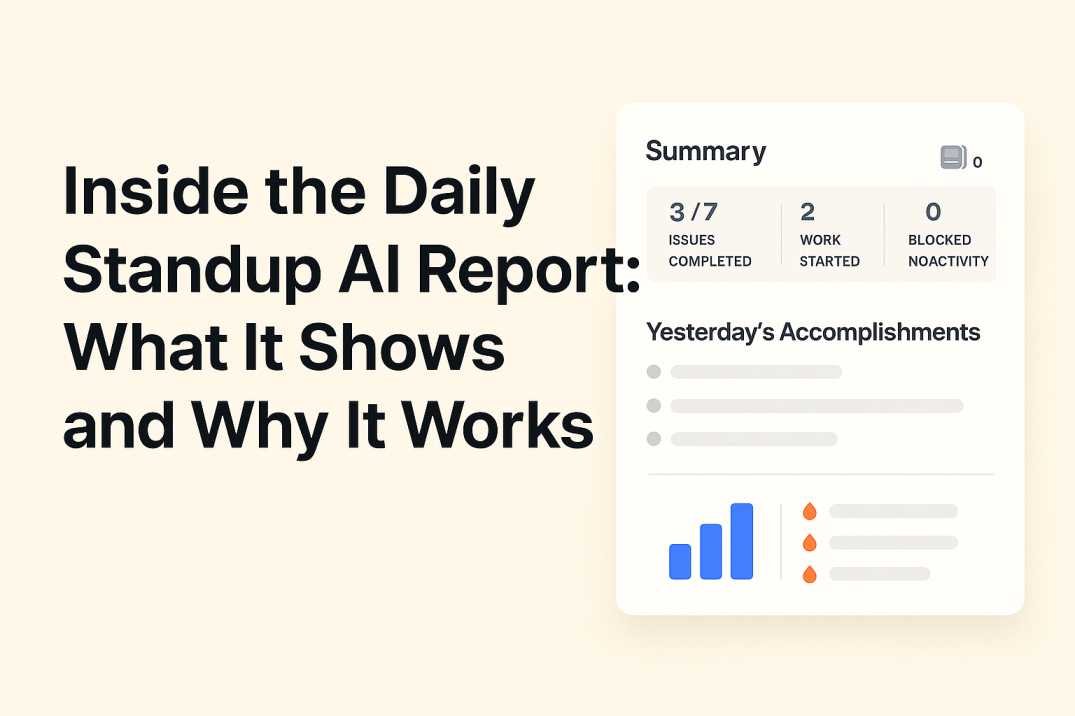Inside the Daily Standup AI Report: What It Shows and Why It Works

In our last post, we broke down why most standups feel broken. This one is about the fix.
We didn’t build another dashboard. We built something you can read in under a minute and immediately know where things stand.
Not a vanity report. Not a Jira dump. Just signal.
Here’s what it gives you
A Fast Snapshot of Progress
Each report starts with the essentials:
- What moved forward (issues done, PRs merged)
- What started
- Anything blocked or slowing down
- Open PRs that haven’t seen movement
This is your high-level read. If you only have 15 seconds, this is where you look.
Yesterday’s Output
No summaries. No filler. Just:
- What got closed
- Who did it
- What was deployed
- How much code changed
No more waiting for status updates or digging through tools to figure out what actually shipped.
What’s Moving, and What’s Not
You also see:
- Issues that were picked up
- PRs that were opened
- Anything waiting too long for review
This helps you catch slowdowns early before they turn into delays.
What Needs Attention Now
If something’s blocked or stuck, it shows up clearly. CI issues, missing access, security waits, anything that needs someone to step in.
You also get heads-ups on anything trending toward trouble (like a task with a looming due date that hasn’t moved).
Key Signals and Next Steps
You don’t just get raw data. The report pulls out patterns:
- Who’s shipping steadily
- Where reviews are slow
- Where flow is dropping
And it recommends what to do:
- Review PRs that are idle
- Reassign overloaded work
- Follow up on tasks close to deadline
Why It Works
Because it's designed to be read and acted on. Quickly.
No meetings needed. No second-guessing what’s happening. Just one snapshot of where your team stands, what’s moving, and what to fix.
It makes standups sharper. Or replaces them entirely.
Try it once. You’ll feel the difference.

